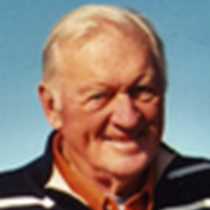Astoria, Oregon
At dawn the Sea Bird lay under the 4.1-mile long Astoria-Megler bridge taking on fuel. Within a few minutes the boat moved to its familiar dock alongside the Columbia River Maritime Museum. After breakfast guests disembarked and entered the Museum, a world-class facility “dedicated to preserving and interpreting the maritime heritage of the Columbia River and the Pacific Northwest.”
By mid-morning, motor coaches began the eleven-mile trip to Fort Clatsop, third winter home of the Corps of Discovery. In December 1805, the brave rag-tag explorers set up what they thought was a permanent western bivouac at Station Camp on the north side of the river’s mouth. After three weeks, they gave up. Rain-soaked, dressed in deteriorating buckskin, and hungry, they paddled upstream to relatively smooth water, crossed over and took up residence on higher ground at Fort Clatsop. (The accompanying image indicates their likely canoe landing site.) Despite rain and more rain, the Corps hunted, found plenty of food – usually “pore elk,” while the captains wrote, drew maps and prepared drawings for their journals.
The charming working town of Astoria was founded by the Astor party in 1811. Today, despite a decline in fishing and forest products activity, the community boasts Coast Guard stations with plenty of work interdicting drug smugglers along the West Coast and rescuing craft at “the graveyard of the Pacific.” Over 70 hillside homes are on the historic register; a busy community college overlooks the river; volunteer conductors offer history narration aboard a riverside trolley; several excellent restaurants, boutiques and a famous chocolate factory line the main downtown street. Sea Bird guests took advantage of these small town wonders.
Later in the afternoon, for the more adventuresome, a motor coach took guests to Fort Stevens State Park, Oregon, to see the decaying superstructure of the Peter Iredale, an old ship buried in the sand (lost in 1905). Another motor coach wound its way up Coxcomb Hill to visit the Astor Column and a 360-degree overlook.
At dawn the Sea Bird lay under the 4.1-mile long Astoria-Megler bridge taking on fuel. Within a few minutes the boat moved to its familiar dock alongside the Columbia River Maritime Museum. After breakfast guests disembarked and entered the Museum, a world-class facility “dedicated to preserving and interpreting the maritime heritage of the Columbia River and the Pacific Northwest.”
By mid-morning, motor coaches began the eleven-mile trip to Fort Clatsop, third winter home of the Corps of Discovery. In December 1805, the brave rag-tag explorers set up what they thought was a permanent western bivouac at Station Camp on the north side of the river’s mouth. After three weeks, they gave up. Rain-soaked, dressed in deteriorating buckskin, and hungry, they paddled upstream to relatively smooth water, crossed over and took up residence on higher ground at Fort Clatsop. (The accompanying image indicates their likely canoe landing site.) Despite rain and more rain, the Corps hunted, found plenty of food – usually “pore elk,” while the captains wrote, drew maps and prepared drawings for their journals.
The charming working town of Astoria was founded by the Astor party in 1811. Today, despite a decline in fishing and forest products activity, the community boasts Coast Guard stations with plenty of work interdicting drug smugglers along the West Coast and rescuing craft at “the graveyard of the Pacific.” Over 70 hillside homes are on the historic register; a busy community college overlooks the river; volunteer conductors offer history narration aboard a riverside trolley; several excellent restaurants, boutiques and a famous chocolate factory line the main downtown street. Sea Bird guests took advantage of these small town wonders.
Later in the afternoon, for the more adventuresome, a motor coach took guests to Fort Stevens State Park, Oregon, to see the decaying superstructure of the Peter Iredale, an old ship buried in the sand (lost in 1905). Another motor coach wound its way up Coxcomb Hill to visit the Astor Column and a 360-degree overlook.




